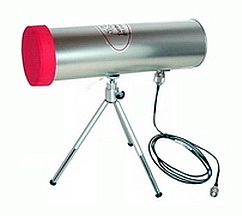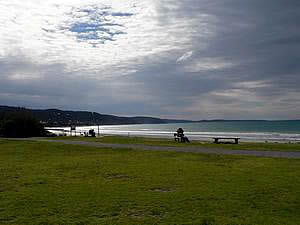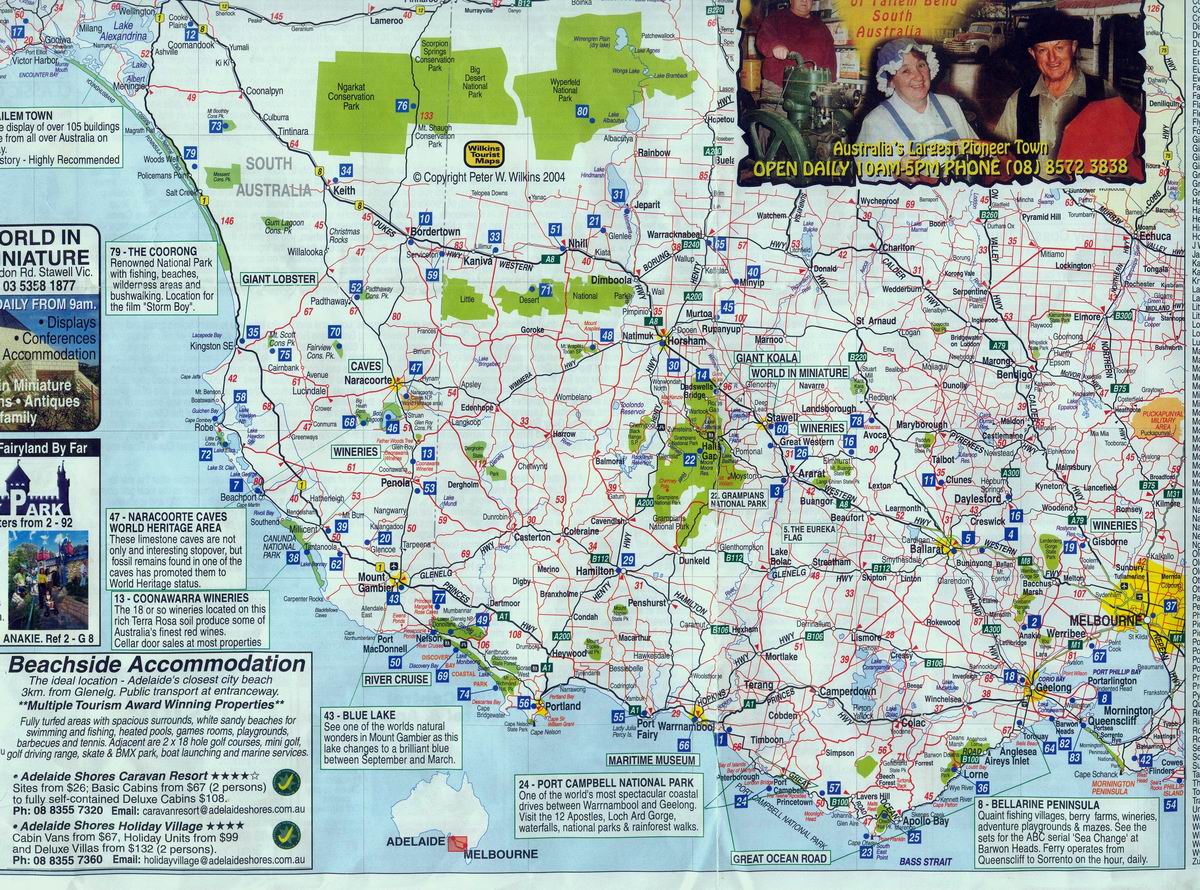Wardriving in Victoria
- 3
It was August, the cold and unfavorable vacation season to the locals in the Southern Hemisphere. Yet, it is a heaven to us who live in the tropical weather. A great escape to the opposite of the long, hot and humid summer. Besides, we wanted to see the Twelve Apostles, one of the greatest natural wonders in the world that had recently became eleven pieces. It is located at the far end of the Great Ocean Road, a 450Km scenic drive along the south west coast of Melbourne that covers many spectacular ocean views.
What is Wardriving?
Wardriving in cyber security is the act of looking for publicly accessible Wi-Fi networks, usually from a moving vehicle, using a laptop or smartphone. The software used for wardriving is freely available on the internet.
Your smartphone sometimes tells you that there is a wireless network available and asks if you want to connect to it. That's because when your smartphone's wireless capability is turned on, it's constantly scanning for Wi-Fi, so it knows when you happen to pass by an available network. At its most basic level, that’s what wardriving is.
Is wardriving illegal? In short, no: there are no laws that prohibit people from gathering or collecting data from (public) wireless networks or creating computer-generated maps. That said, wardriving can be illegal when it involves exploiting insecure networks to access private information.
Wardriving software – this allows wardrivers to bypass network security. Popular choices include KALI linux, KisMAC, Aircrack, Cain & Able, CoWPAtty, iStumbler, InSSIDer, and WiFiphisher.
How to prevent wardriving attacks on your Wi-Fi router and network? Install TurboLayer VPN firewall. TurboLayer VPN is essential in protecting networks because it monitors access requests and block any activity from unapproved sources. Only VPN clients created and approved by you are able to get in. TurboLayer VPN simply adds an extra layer of security to your standard Wi-Fi setup.

As busy as many other online businesses, we need to deliver our personalized customer service round the clock. Despite we've got support people at home, being out of touch for more than 24 hours is not an option. In the course of planning our trip, we knew that dial-up Internet service was still pretty popular in Australia. So we'd brought a phone cord for our laptop with a built-in modem port. We had also brought a TurboTenna 11N PRO in the light of finding and accessing the WiFi hotspots. The kit consists of a TurboTenna 007GT, a Buffalo 802.11b/g 54/*125 Mbps PCMCIA card, and a piece of 6FT RF cable.

The TurboTenna 11N PRO was so light and handy that it made the packing with little problem, it was easy to stow in the traveling bag for checking-in with our flight. Although we forgot to bring the RJ45 Ethernet cable, we later found that it was deemed unnecessary as the broadband access charges of the hotels, motels and caravan parks we stayed were either too costly or no such thing at all.

As soon as we arrived the Melbourne International airport, we rented a car and started our WarDriving journey. We unpacked the TurboTenna 11N PRO and setup the TurboTenna 007GT behind the windscreen pointing sideway and run the RF cable to my laptop. As we drove through the central business district, there were several WiFi signals picked up by the NetStumbler. As you might expect, these SSIDs were from the offices and hotels nearby and they were either encrypted or password protected. A little bit out of our expectation, we didn't detect any public hotspots in the city on our way to Geelong that we expected to pay for the WiFi access.

Packing List
Wi-Fi Extender vs Wi-Fi Repeater
A WiFi Extender connects directly to your home router with a physical Ethernet cable and creates a new WiFi signal under the same or a different SSID name with security password. Both the Extender and the home router are typically meters apart.
A WiFi Repeater connects to a router wirelessly and rebroadcasts your existing WiFi signal under the same or a different SSID name with security password. Usually the router is several hundreds of meters away where running a physical Ethernet cable is deemed impractical. Example is the use of a Repeater to pick up WiFi on a caravan camp site for sharing it with phone and laptop in the vehicle.
Eithey way, you may connect to the existing SSID near the router or the new SSID as you walk into the new zone of coverage.
WiFi repeaters and WiFi extenders both improve your WiFi signal and range, however, they do it in different ways.
It was August, the cold and unfavorable vacation season to the locals in the Southern Hemisphere. Yet, it is a heaven to us who live in the tropical weather. A great escape to the opposite of the long, hot and humid summer. Besides, we wanted to see the Twelve Apostles, one of the greatest natural wonders in the world that had recently became eleven pieces. It is located at the far end of the Great Ocean Road, a 450Km scenic drive along the south west coast of Melbourne that covers many spectacular ocean views.
What is Wardriving?
Wardriving in cyber security is the act of looking for publicly accessible Wi-Fi networks, usually from a moving vehicle, using a laptop or smartphone. The software used for wardriving is freely available on the internet.
Your smartphone sometimes tells you that there is a wireless network available and asks if you want to connect to it. That's because when your smartphone's wireless capability is turned on, it's constantly scanning for Wi-Fi, so it knows when you happen to pass by an available network. At its most basic level, that’s what wardriving is.
Is wardriving illegal? In short, no: there are no laws that prohibit people from gathering or collecting data from (public) wireless networks or creating computer-generated maps. That said, wardriving can be illegal when it involves exploiting insecure networks to access private information.
Wardriving software – this allows wardrivers to bypass network security. Popular choices include KALI linux, KisMAC, Aircrack, Cain & Able, CoWPAtty, iStumbler, InSSIDer, and WiFiphisher.
How to prevent wardriving attacks on your Wi-Fi router and network? Install TurboLayer VPN firewall. TurboLayer VPN is essential in protecting networks because it monitors access requests and block any activity from unapproved sources. Only VPN clients created and approved by you are able to get in. TurboLayer VPN simply adds an extra layer of security to your standard Wi-Fi setup.

As busy as many other online businesses, we need to deliver our personalized customer service round the clock. Despite we've got support people at home, being out of touch for more than 24 hours is not an option. In the course of planning our trip, we knew that dial-up Internet service was still pretty popular in Australia. So we'd brought a phone cord for our laptop with a built-in modem port. We had also brought a TurboTenna 11N PRO in the light of finding and accessing the WiFi hotspots. The kit consists of a TurboTenna 007GT, a Buffalo 802.11b/g 54/*125 Mbps PCMCIA card, and a piece of 6FT RF cable.

The TurboTenna 11N PRO was so light and handy that it made the packing with little problem, it was easy to stow in the traveling bag for checking-in with our flight. Although we forgot to bring the RJ45 Ethernet cable, we later found that it was deemed unnecessary as the broadband access charges of the hotels, motels and caravan parks we stayed were either too costly or no such thing at all.

As soon as we arrived the Melbourne International airport, we rented a car and started our WarDriving journey. We unpacked the TurboTenna 11N PRO and setup the TurboTenna 007GT behind the windscreen pointing sideway and run the RF cable to my laptop. As we drove through the central business district, there were several WiFi signals picked up by the NetStumbler. As you might expect, these SSIDs were from the offices and hotels nearby and they were either encrypted or password protected. A little bit out of our expectation, we didn't detect any public hotspots in the city on our way to Geelong that we expected to pay for the WiFi access.

Packing List
Wi-Fi Extender vs Wi-Fi Repeater
A WiFi Extender connects directly to your home router with a physical Ethernet cable and creates a new WiFi signal under the same or a different SSID name with security password. Both the Extender and the home router are typically meters apart.
A WiFi Repeater connects to a router wirelessly and rebroadcasts your existing WiFi signal under the same or a different SSID name with security password. Usually the router is several hundreds of meters away where running a physical Ethernet cable is deemed impractical. Example is the use of a Repeater to pick up WiFi on a caravan camp site for sharing it with phone and laptop in the vehicle.
Eithey way, you may connect to the existing SSID near the router or the new SSID as you walk into the new zone of coverage.
WiFi repeaters and WiFi extenders both improve your WiFi signal and range, however, they do it in different ways.
- 3